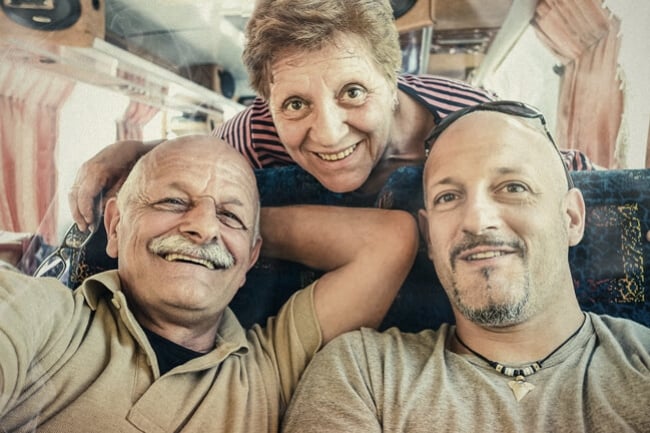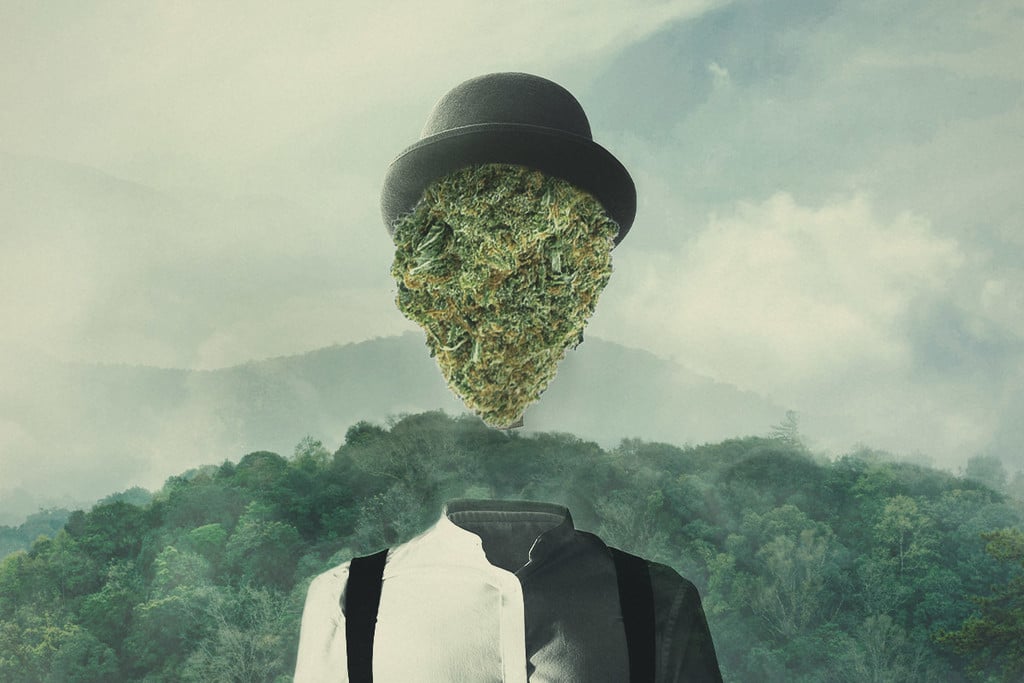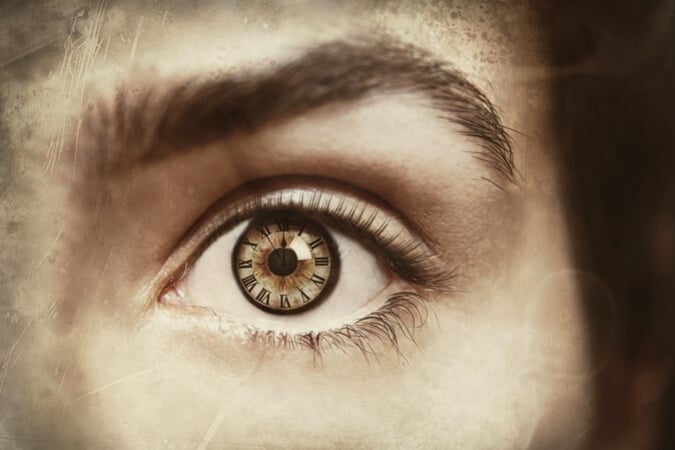.
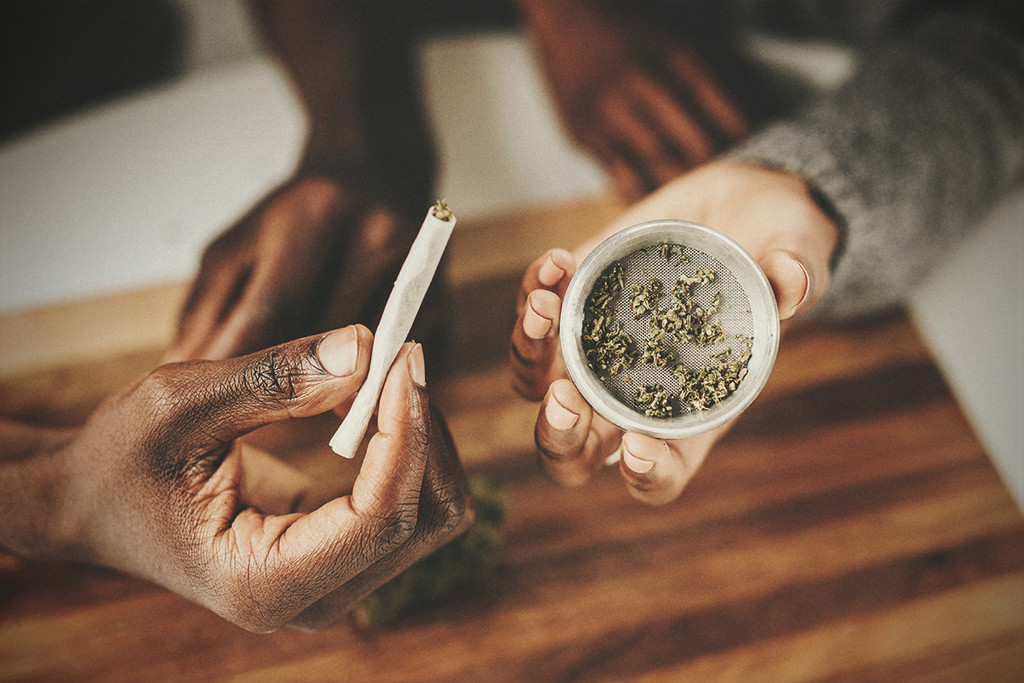
What Is a Weed Contact High?
Have you ever experienced a contact high? One moment you're enjoying a chat with your smoking friend, and the next you feel your eyelids getting heavy and your state of mind lifting. Contact highs are certainly possible when hanging around with smokers in close quarters. Let's take a deep dive into contact highs.
Contents:
Have you ever felt stoned without touching a joint, bong, or blunt? Then you may have experienced a contact high. Sometimes cannabis users intentionally seek out this experience; sitting in sealed cars and bathrooms while people around you light up increases the odds of getting high off secondhand smoke. Other times, you might feel slightly elevated without intending to get high at all; your friend sitting across the room, blunt in hand, could generate enough smoke to tweak your endocannabinoid system in the right (or wrong) way.
Despite some people swearing that they get high when standing around someone smoking a spliff, some question the validity of contact highs; doubters pin the phenomenon of overly cautious onlookers or the placebo effect. So, can you get high from indirect exposure to marijuana? Below, we’ll dive into the mechanism of a contact high, and some studies that shine a light on the possibility.
What Is a Contact High, and What Does It Feel Like?
The term “contact high” has two different meanings. In one context, it describes a phenomenon of somebody experiencing the psychoactive effects of a drug without directly consuming it, such as through inhaling secondhand cannabis smoke. The second, and much more obscure meaning, refers to somebody experiencing a psychoactive effect by merely being in the presence of someone under the influence of a mind-altering drug.
The first meaning makes more scientific sense outright, and people claim to experience this kind of contact high when sitting in on a hotbox. Whether intentionally or not, inhaling ambient smoke over a prolonged period, especially in unventilated conditions, can result in one feeling as though they’ve smoked cannabis, even though they were just breathing in the surrounding air. Of course, the level of THC inhaled by non-smokers is significantly less than that of those imbibing directly.
The second type of contact high raises a lot more eyebrows than the first. However, it may have some scientific grounding. A paper[1] published in the International Journal of the Addictions in 1971 features a glossary filled with terms used by drug users at the time. The term “psychogenic trip” exists within these pages, describing the process of someone getting high through close proximity to another person under the influence of a psychoactive drug.


A range of factors likely contribute to this odd experience, including the physical and social setting, and the placebo effect. The famous American medicinal Chemist Alexander Shulgin mentions this phenomenon in his book PiHKAL while writing about the psychedelic phenethylamine 2C-I. Here, he details an occasion where an individual took a placebo while around others who took the drug. The person in question stated[2] that he “absorbed the ambience of the folks who had actually imbibed the material”.
While interesting, this report does not serve as evidence. A 2020 paper[3] published in the journal Psychopharmacology provides more scientific insight. This work documents a study in which participants that received a placebo for psilocybin (the active ingredient in magic mushrooms) experienced varying degrees of psychoactive effects ranging from no changes, to effects associated with moderate and high doses of the drug. The authors concluded that both context and expectations can promote psychedelic-like effects. While contact highs are reportedly induced without the ingestion of a placebo, these factors could play a role in the experience.
Are Contact Highs Real?
Contacts highs that derive from inhaling secondhand smoke are certainly a real thing. But what about the second—“psychogenic”—type? It seems unlikely, but many variables could make it a possibility. Studies comparing psychedelics to placebo doses have found interesting results. However, a true contact high in this context refers to an experience that comes about without taking any substance at all—not even a placebo. We need to wait for studies to evaluate this phenomenon to determine how frequent and potent these experiences are. For now, we only have anecdotal experiences to reference.
Can You Get High From Secondhand Weed Smoke?
Absolutely. Look at it this way: when you’re sitting in a hotbox, you’re effectively smoking weed—albeit only indirectly. Sure, you’re not getting the same quantity of THC compared to hitting a joint, but you’re still inhaling THC from the room. Stay in a smoky hotbox long enough, and you’ll start to feel a moderate high creep in. You don’t even have to perch yourself in a hotbox to feel these effects. If you’re sitting close enough to a group smoking heavily in a regular room, you’ll also inhale small but noticeable levels of THC over time. But you don’t have to take our word for it. Amazingly, researchers have created simulated hotboxes to put this hypothesis to the test.
A John Hopkins University School of Medicine study[4] placed two groups of volunteers in a chamber. One group consisted of seven people who smoked cannabis at least twice per week, and the other was made up of twelve subjects who hadn’t smoked in the last six months. Those in the smoking group received joints and lit up in the enclosed space in both ventilated and unventilated conditions. After running blood, urine, saliva, and hair tests, the researchers found markers for THC exposure in the blood and urine of non-smokers under both conditions.
Another study[5] tested participants under more real-world conditions in a coffeeshop in Maastricht, Netherlands. Researchers sent eight healthy volunteers into the establishment to be exposed to weed smoke for a three-hour period. Blood and urine samples showed markers for THC exposure.

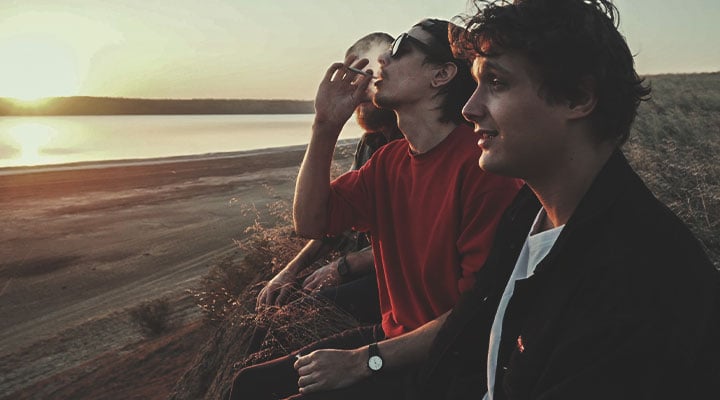
Can You Get High From Smelling Weed?
No, you can’t get high from merely whiffing cannabis buds. First, cannabinoids don’t volatilise at room temperature. Second, in raw flowers, THC exists in the form of THCA—a non-psychotropic molecule.
However, just because you won’t get high doesn’t mean smelling weed can’t tweak your mood. Aromatic terpenes underpin the signature scent of the herb. These molecules are found all throughout the plant kingdom and are particularly concentrated in cannabis buds. Many studies have sought to determine how they affect the human body and mind, and it turns out even small concentrations can impact human cognition. While the amount that enters your system from smelling bud probably won’t do much, walking through pine forests and exposing your system to high levels of pinene definitely has interesting effects[6].
How Long Does THC From a Contact High Stay in Your System?
It depends on the circumstances. Locking yourself in a hotbox with your blazing buddies will cause higher levels of THC to enter your system compared to sitting across a ventilated room from a smoker.
Occasional cannabis smokers can expect THC and its metabolites to linger in their blood, urine, and saliva for up to three days. However, most of the THC a smoker inhales enters their bloodstream, and only minimal amounts are exhaled into the air. Passive smoke will deliver only small quantities of the cannabinoid into your system.
The coffeeshop study mentioned above shows that THC cleared the blood within six hours, and the metabolite THC-COOH within 14 hours. None of the urine samples produced THC or THC-COOH concentrations above the detection cutoff of 25ng/ml.
The bottom line: stay well away from smoking friends if you have a scheduled drug test coming up. Your body will likely clear the cannabinoid within the space of a day, but you don’t always have control over when and where you’re exposed to THC if your friend group has an affinity for the herb.
Should You Be Worried About a Secondhand High?
It depends. If you’re a regular cannabis user or don’t mind the occasional passive high, then you don’t need to worry. If you’re more health-conscious and don’t enjoy inhaling smoke, you should know that not only THC permeates the air around you; cannabis smoke also contains carcinogens and other toxins. Finally, you should steer clear of any passive THC exposure close to a drug test or if you have to undergo random tests as part of your employment contract. Plus, if you have important commitments such as meetings or presentations during the day, you probably don’t want to turn up with a subtle but noticeable altered state of consciousness.
- The Vocabulary of the Drug User and Alcoholic: A Glossary https://www.tandfonline.com
- 2,5-DIMETHOXY-4-IODOPHENETHYLAMINE https://www.erowid.org
- Tripping on nothing: placebo psychedelics and contextual factors https://link.springer.com
- 'Extreme' exposure to secondhand cannabis smoke causes mild intoxication https://www.eurekalert.org
- Concentrations of delta9-tetrahydrocannabinol and 11-nor-9-carboxytetrahydrocannabinol in blood and urine after passive exposure to Cannabis smoke in a coffee shop https://pubmed.ncbi.nlm.nih.gov
- Terpenes from Forests and Human Health https://www.ncbi.nlm.nih.gov


























